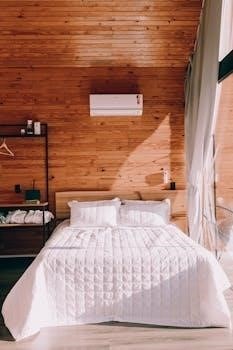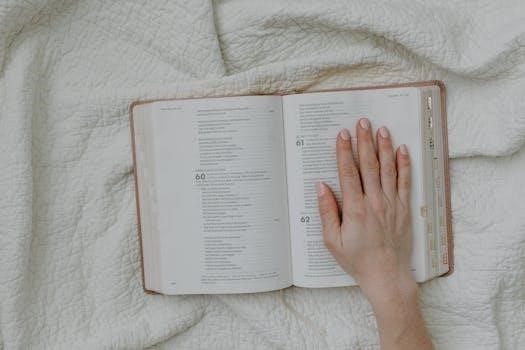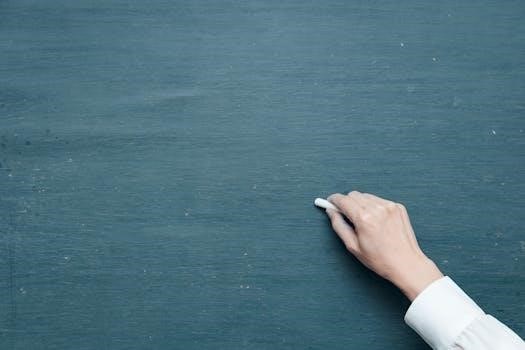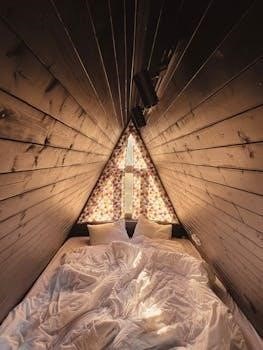
Crumb quilting is a fantastic technique for using up small fabric scraps. It involves sewing together random bits to create new fabric panels. This method allows creativity to flow while minimizing waste. It is perfect for both beginner and expert quilters alike.
What is Crumb Quilting?
Crumb quilting is a sewing technique where tiny, irregular pieces of fabric, often called “crumbs,” are stitched together. Unlike traditional quilting with specific shapes, crumb quilting embraces randomness. The goal is to join these small scraps, creating a new, larger piece of fabric. These newly formed panels can then be used in various projects, from small quilts to bags. It’s a fun, sustainable way to use up leftover fabric, promoting zero-waste practices, and allowing for unique and colorful designs.
Materials Needed for Crumb Quilting
To begin crumb quilting, you’ll need an assortment of fabric scraps, a sewing machine, thread, scissors, and a rotary cutter. A comfortable thimble is also beneficial.
Fabric Scraps⁚ Selection and Preparation
Gather your fabric scraps, those tiny, oddly shaped pieces leftover from previous projects. Sort them by color, if desired, or embrace a random mix. Ensure scraps are clean and ironed flat, making them easier to handle. Small scraps, often called “crumbs,” are perfect for this method. These bits of fabric may seem insignificant, but they are the key to creating unique designs.
Essential Sewing Tools
You’ll need a sewing machine with a reliable straight stitch. A rotary cutter, mat, and ruler are essential for trimming and squaring up your crumb blocks. Use sharp scissors for cutting threads and smaller fabric pieces. A comfortable thimble will protect your fingers if you prefer hand sewing. Quality thread that matches your fabric scraps is necessary for a strong and durable quilt. Pins and an iron are also needed.

Step-by-Step Crumb Quilting Process
Start by joining small fabric pieces together randomly. Continue adding more scraps until you have a larger fabric panel. Trim this panel to your desired size, then use it in your project.
Joining Small Fabric Pieces
Begin by selecting two small fabric scraps. Place them right sides together and sew along one edge using a quarter-inch seam allowance. Continue adding more scraps to the initial pair, sewing each new piece to any available edge. Do not worry about the shapes or sizes, just focus on joining them. Chain-piecing can speed up this process. Press seams open or to one side as you go.
Creating Larger Fabric Panels
Once you have several smaller sewn pieces, begin joining these to create larger panels. Sew them together in rows or randomly, ensuring all edges are aligned. Continue adding until your desired panel size is reached. Remember that the goal is to create a new fabric piece from many small scraps. Press each new seam. This will allow you to have bigger pieces of fabric to work with.
Techniques for Crumb Quilt Blocks
Crumb quilt blocks can be approached with various techniques. You can choose a random placement or color coordinate your scraps. This choice impacts the block’s final appearance. Trimming is essential.
Random Placement vs. Color Coordination
When creating crumb quilt blocks, you have the option of either using a random placement technique or coordinating your fabrics by color. Random placement involves sewing scraps together without any planning, which results in a vibrant, chaotic look. Color coordination, on the other hand, involves grouping fabrics by hue, creating a more organized and cohesive appearance. Both methods offer unique aesthetics, allowing you to choose based on your personal preference and the desired outcome of your quilt;
Trimming and Squaring Up Crumb Blocks
After creating your crumb blocks, trimming and squaring them up is a crucial step. Use a rotary cutter, ruler, and cutting mat to ensure accurate cuts. This process involves removing any uneven edges and making the blocks perfectly square or rectangular. Properly trimmed blocks will fit together seamlessly when assembling the quilt top. This step is essential for achieving a professional and polished finish for your crumb quilt project.

Finishing Your Crumb Quilt
Completing your crumb quilt involves combining the blocks, adding borders, and sashing if desired. These final steps transform your pieced sections into a cohesive quilt top. The process creates the completed quilt.
Combining Crumb Blocks into a Quilt Top
Once you have a collection of crumb blocks, the next step is to arrange and sew them together. You can lay them out on a design wall or floor to see how they look together. Feel free to experiment with different layouts until you are happy with the overall design. Sew the blocks together in rows, then join the rows to create the quilt top, ensuring all seams match nicely. This process requires careful alignment for a smooth finished look.
Adding Borders and Sashing
Adding borders and sashing is an excellent way to frame your crumb blocks and provide visual separation. Sashing, which are strips of fabric sewn between the blocks, can help to define each block and make the design pop. Borders, sewn around the perimeter of the quilt top, provide a finished edge and add a final touch. Choose colors and patterns that complement your crumb blocks, enhancing the overall look of your quilt.
Alternative Uses for Crumb Piecing
Crumb piecing isn’t limited to quilts; it’s versatile for various sewing projects. Create unique bags, pouches, or even incorporate crumb blocks into larger quilting designs for added texture and interest.
Creating Bags and Other Sewing Projects
Beyond quilts, crumb piecing is excellent for crafting unique bags. The random nature of the scraps allows for one-of-a-kind designs. Small pouches, totes, and even cosmetic bags benefit from the colorful and textured look. Crumb fabric panels also make great linings for larger bags, adding a hidden pop of interest and showcasing your creativity. You can also create placemats or mug rugs using this technique.
Using Crumb Blocks in Larger Quilts
Crumb blocks are versatile additions to larger quilt designs. They can be incorporated as unique blocks within a traditional quilt pattern. Alternatively, use them as sashing strips to add visual interest between standard blocks. Crumb pieced sections can also serve as borders, framing the central design in a patchwork of color and texture. The technique also works well in creating foundation for more complex quilting designs.

Tips for Successful Crumb Quilting
Effectively manage small scraps by organizing them by color or size. Aim for a balance of fabrics to achieve the desired density. A comfortable thimble will also be your friend in this process.
Managing Small Scraps Effectively
Sorting your fabric scraps by color or size before starting can greatly streamline the crumb quilting process. Consider using small containers or clear bins to keep the various scraps separated and easily accessible. This organization method will prevent you from having to search endlessly for the right piece and keep your workspace tidy. It will also aid in achieving the desired color balance throughout your quilt.
Achieving Desired Density and Weight
The density and weight of your crumb quilt can be controlled by the size and thickness of the fabric scraps you choose. Using very small and thin pieces will result in a lighter, more flexible quilt, while larger and thicker scraps will create a denser and heavier quilt. Consider layering scraps on top of each other or even incorporating batting pieces to alter the thickness, so that you can achieve the perfect weight for your project.
Inspiration and Ideas for Crumb Quilts
Explore different fabric combinations to create unique crumb quilts. Consider using a variety of colors, patterns, and textures to add visual interest. Try different layouts for your blocks. You can also make bags or other sewing projects with crumb piecing.
Exploring Different Fabric Combinations
When creating crumb quilts, don’t be afraid to experiment with various fabric types. Mix cotton with linen, or incorporate small pieces of silk or velvet for added texture. Consider using different color palettes, like bright and bold colors or softer, muted tones. Play with patterns by combining florals, geometrics, and stripes. Think about how the different fabric weights might affect the overall feel of your quilt. The possibilities are endless, and this is where your creativity can truly shine.
Unique Layout and Design Options
Crumb quilts offer diverse design options beyond traditional blocks. Consider arranging your crumb blocks in a random, scattered pattern for a more organic look. You could also create a planned layout, using the blocks as the main feature, or as sashing or borders. Experiment with different sizes of crumb blocks to create visual interest. Think about incorporating negative space to make the crumb pieces stand out. Another design idea is to create a gradient effect with different colored scraps.
Environmental Benefits of Crumb Quilting
Crumb quilting is an eco-friendly practice that reduces fabric waste by utilizing small scraps. It promotes sustainable quilting, preventing materials from ending up in landfills. This makes it a responsible choice for quilters.
Reducing Fabric Waste
Crumb quilting offers a superb solution for utilizing the smallest fabric remnants that often end up discarded. By incorporating these tiny pieces, quilters can significantly diminish their overall fabric waste. This technique transforms what would be considered unusable scraps into beautiful, functional textiles, promoting a more sustainable approach to crafting. Consequently, it reduces the need for new fabric, lessening the environmental footprint of quilting.
Promoting Sustainable Quilting Practices
Crumb quilting actively encourages sustainable practices within the quilting community. By utilizing every last bit of fabric, quilters embrace a zero-waste mentality. This approach reduces the demand for newly produced textiles, conserving resources and minimizing environmental impact. Furthermore, it fosters a creative and resourceful mindset, challenging quilters to find beauty and value in what might otherwise be overlooked. Crumb quilting thereby supports a more eco-conscious and responsible way of engaging with the craft.

Crumb Quilting Tutorials and Resources
Numerous online video tutorials demonstrate crumb quilting techniques. Additionally, printable guides offer step-by-step instructions for beginners. These resources help quilters learn and master this unique method, using various visual aids.
Online Video Tutorials
Many online platforms offer video tutorials demonstrating crumb quilting. These videos showcase various techniques, from basic joining methods to more advanced design options. You can find tutorials that cover everything from simple block creation to combining crumb blocks into larger quilt tops. These resources often include visual aids, making the learning process easier for beginners and experts alike. Some videos also cover alternative uses, such as creating bags and other sewing projects, with clear step-by-step instructions.
Printable Guides and Instructions
Numerous websites and blogs provide printable guides and instructions for crumb quilting. These resources often include detailed diagrams and written steps that are easy to follow. You can find guides that cover different aspects of crumb quilting, such as preparing your scraps, creating blocks, and combining them into a quilt. These printable resources are perfect for those who prefer to have physical instructions readily available while they work. They also sometimes offer templates and patterns.
Crumb quilting is a rewarding process that transforms tiny fabric pieces into unique textiles. It’s a great way to be creative and sustainable. Enjoy the journey of using up scraps.
Enjoying the Process of Crumb Quilting
Crumb quilting is not just about the final product; it is about the satisfying process. Embrace the randomness and the opportunity to create something unique from your scraps. There is joy in seeing how different colors and patterns come together. It’s a mindful activity that allows creativity to bloom. Take pleasure in each step, from selecting scraps to sewing them into beautiful, new fabric. This technique is a perfect blend of sustainability and artistic expression.